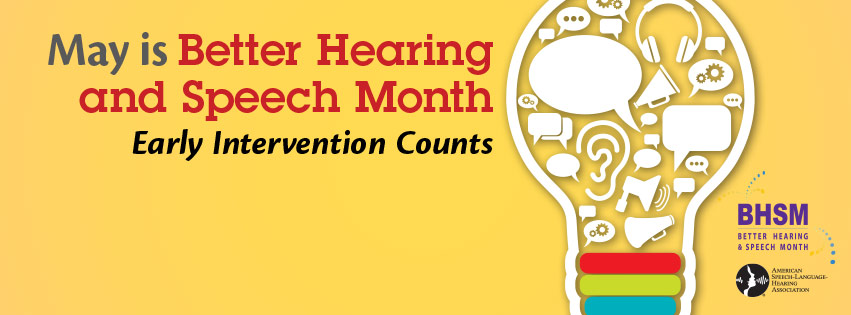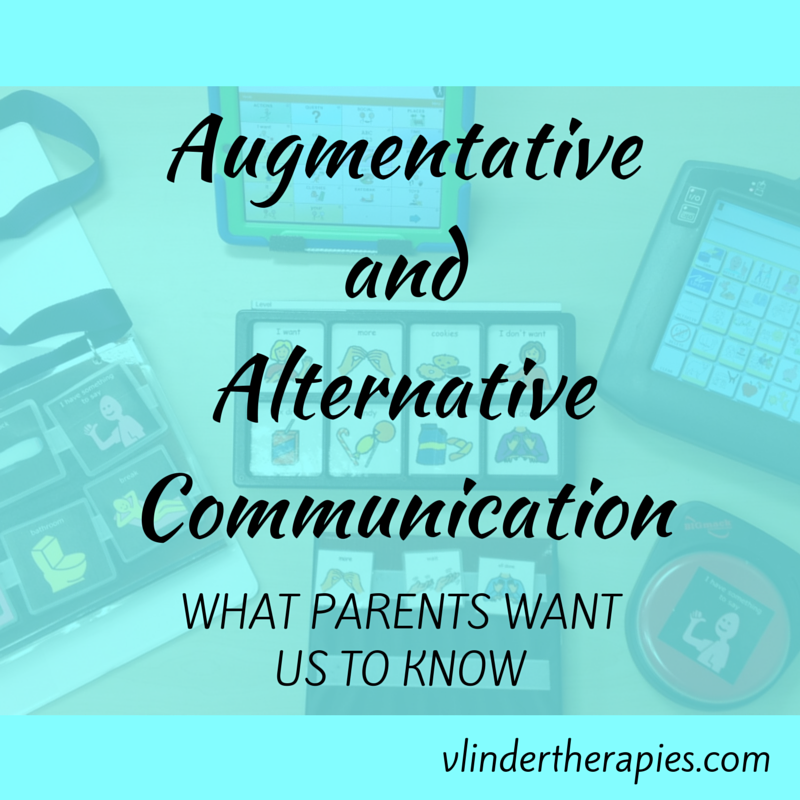#BHSM: AAC (Early Intervention Counts! part 3)

I have been writing a blog series this month for Better Hearing & Speech Month (#BHSM) on what parents wished they had known sooner. In preparation for writing my BHSM newsletter this year, I posed the following questions to parents of children already receiving speech-language services: What do you wish you had learned sooner? What do you wish others understood? Three themes emerged in their responses. You can read about the first theme in my post #BHSM: Early Intervention Counts! and the second in my post #BHSM: Parent Education (Early Intervention Counts! part 2). The focus this week is the third theme: Augmentative-Alternative Communication (AAC)!

I wish that they started giving [her] an AAC device and means to functionally communicate sooner.
I was afraid that if we used assistive communication my son would rely on it, and talk less. Nothing can be further from the truth.
Augmentative-Alternative Communication, usually abbreviated to AAC, is any method of communicating other than oral speech. You can read more about what AAC is here: What is AAC? While I am sad that there needs to be a list at all, I am pleasantly surprised this was one of the response themes. Because of fear and misinformation, it can sometimes feel like an uphill battle getting AAC systems to the individuals who desperately need (and deserve) access to functional communication. I love seeing parents understand the grave importance of having access to functional communication, in whatever form it needs to take for their child.
I wish we had known about and used PECS and AAC sooner, before [he] started going to school. We're now familiar with both communication tools but were definitely not aware of either early on. [He] started using PECS when he started school at 3, but I'm sure he could have used his AAC device then and would have benefited from it since he's a visual learner who gravitates towards technology. With the voice output device, the ability to hear the words and see the text on the screen is helping him verbalize his needs and wants and increasing his vocabulary.
A lot more education is needed to dispel myths that turning to AAC is: “giving up”, or a “crutch” that will make the child lazy, or is only a "last resort". Nothing could be further from the truth. There is no good reason to put a child's language development and ability to communicate their thoughts, needs, wants, and feelings on hold while waiting (hoping) for their speech to develop. Speech can be worked on simultaneously, but langauge development and access to communication should never be sacrificed in favor of a "speech only" approach. Our number one priority should be to give every child a means to communicate now – in whatever way possible. Because most other development hinges on language and communication skills.
Search for, discover, and help your son or daughter develop any appropriate means of communication (even if that isn't talking).
Communication is a basic human right. No child should be denied.
You might also like the following posts:
Apraxia, Fluency, Voice, on my! The S in SLP
Receptive, Expressive; Oral, Written - The L in SLP
Putting it all together: Communication
 Monday, May 25, 2015 at 6:50PM
Monday, May 25, 2015 at 6:50PM  2 Comments →
2 Comments →  AAC,
AAC,  BHSM,
BHSM,  early intervention | in
early intervention | in  AAC,
AAC,  BHSM
BHSM
Reader Comments (2)
Very good post! My one is 2 years old and we always talk to her. It made her listening skill develop fast and also her communication skill. Even when I have a chat with my friend, my little girl just comment as if we were talking with her. It amazes me every time.
Thank you for this!
Thomas
Thomas, thank you for stopping by and for your comment!